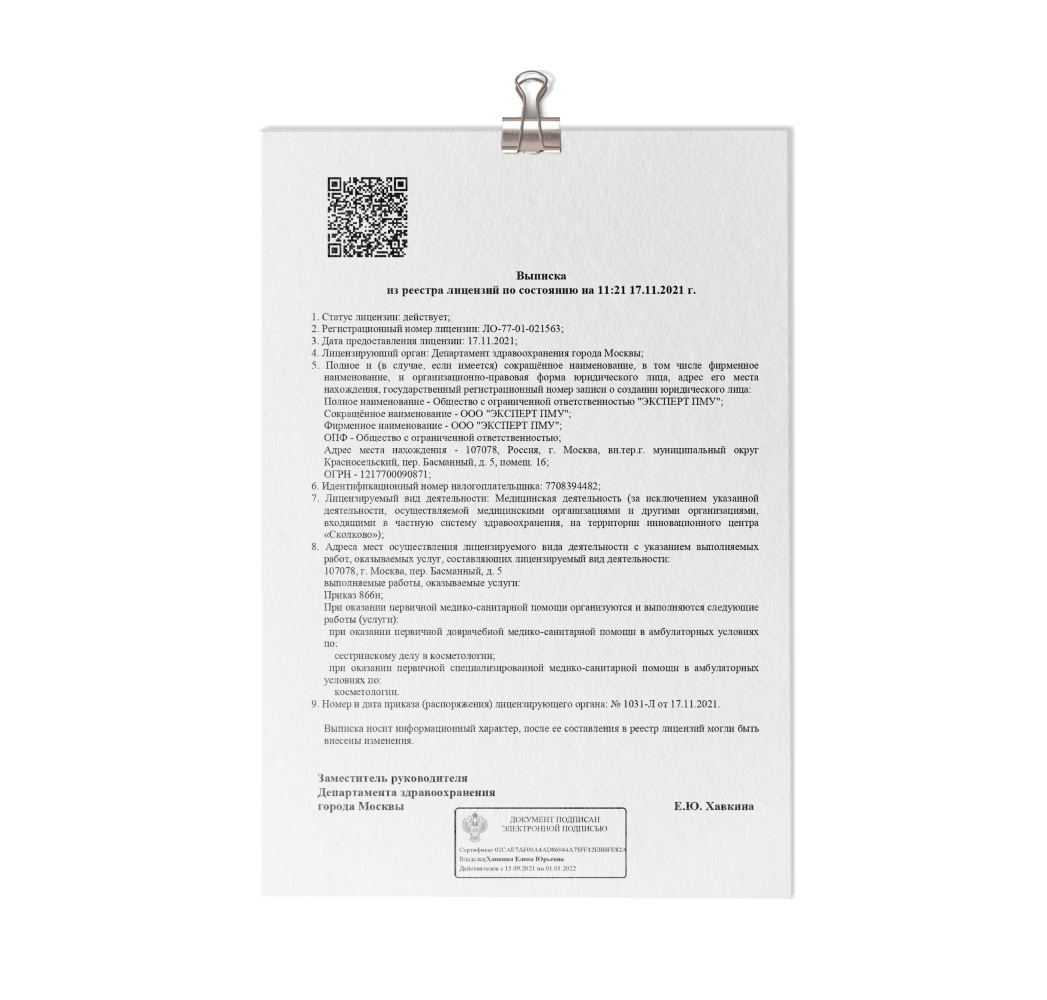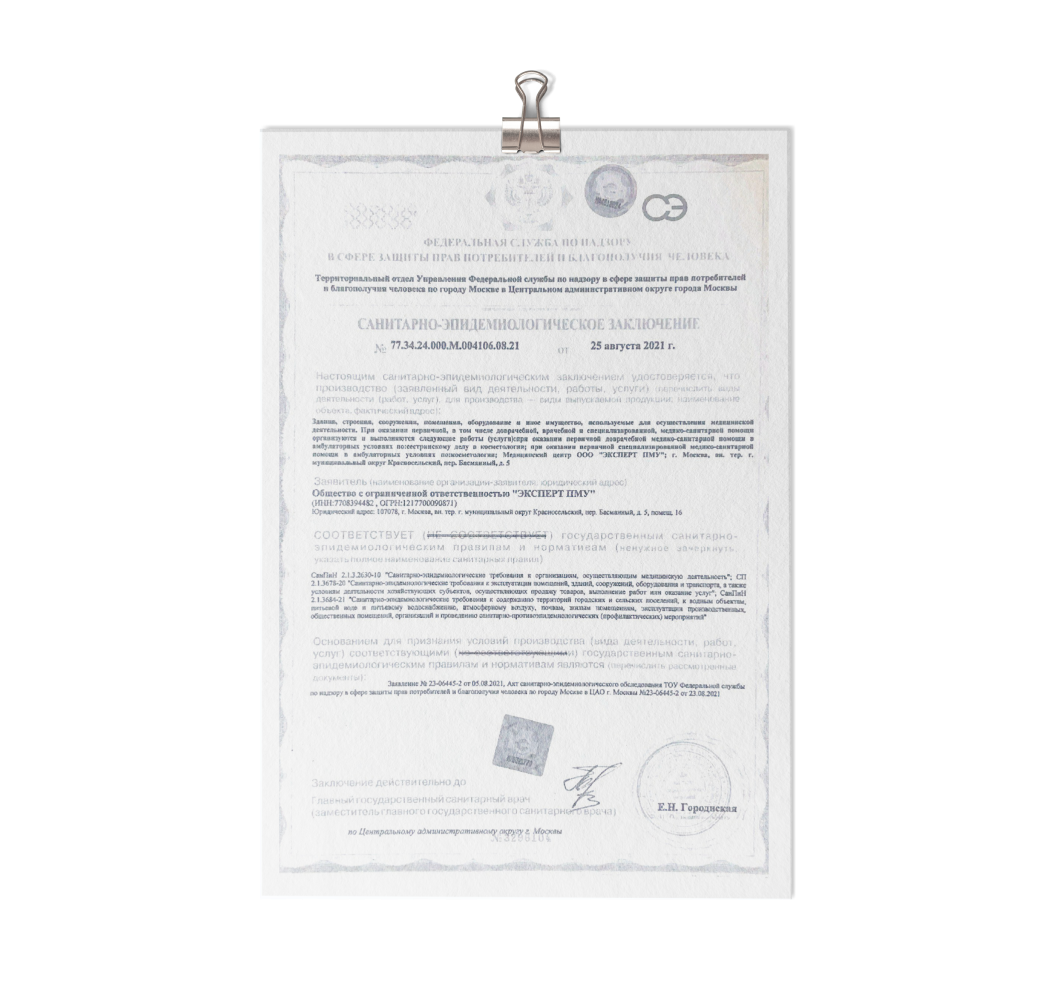Оставьте свой номер телефона и мы свяжемся с вами!
Или вы можете связаться с нам по номеру:
8 (964) 552-00-01
Нужна помощь?
Закажите обратный звонок, и мы перезвоним вам для консультации в течение 5 минут
Отправляя данные, вы соглашаетесь с политикой обработки данных
Хочешь получить полный гайд?
Заполни форму, и мы отправим его ближайшее время
Отправляя данные, вы соглашаетесь с политикой обработки данных


Студия перманентного макияжа
Инны Фоменко
Более 10 лет в сфере перманентного макияжа
Провели более 100.000 процедур

Более 10 лет в сфере перманентного макияжа
Лучшая студия перманентного макияжа Москвы по мнению премии «TOP100 Beauty»
Провели более 100.000 процедур
Гарантия ПМ на 1 год, если изменит цвет, то переделаем бесплатно
Приживаемость
99% с 2х процедур
99% с 2х процедур




Бесплатно отрисуем эскиз

Наши услуги
Наши услуги
Наши мастера
Наши мастера
Наши мастера являются Чемпионами России и постоянно занимают призовые места на различных всероссийских и международных конкурсов. Подберут форму и цвет с учетом ваших пожеланий и индивидуальных особенностей.
Листайте, чтобы выбрать лучшего мастера для себя:


Меня зовут Валерия, я являюсь ТОП- мастером по перманентному макияжу студии Expert PMU.
Мой опыт работы составляет 4 года, я регулярно повышаю свою квалификацию, и продолжаю обучаться чему то новому у лучших мастеров тренеров, не останавливаясь на достигнутом.
К каждому клиенту у меня индивидуальный подход, я всегда стараюсь учесть все ваши особенности и сделать именно так, как вам понравится и будет выглядеть гармонично!
Мой опыт работы составляет 4 года, я регулярно повышаю свою квалификацию, и продолжаю обучаться чему то новому у лучших мастеров тренеров, не останавливаясь на достигнутом.
К каждому клиенту у меня индивидуальный подход, я всегда стараюсь учесть все ваши особенности и сделать именно так, как вам понравится и будет выглядеть гармонично!
Меня зовут Валерия, я являюсь ТОП- мастером по перманентному макияжу студии Expert PMU.
Мой опыт работы составляет 4 года, я регулярно повышаю свою квалификацию, и продолжаю обучаться чему то новому у лучших мастеров тренеров, не останавливаясь на достигнутом.
К каждому клиенту у меня индивидуальный подход, я всегда стараюсь учесть все ваши особенности и сделать именно так, как вам понравится и будет выглядеть гармонично!
Я просто обожаю то, чем занимаюсь, потому что благодаря этой профессии я помогаю девушкам выглядеть еще красивее и счастливее и получаю сотни благодарностей!
Приглашаю вас на ко мне на процедуры, вы точно останетесь довольны ♥️
Мой опыт работы составляет 4 года, я регулярно повышаю свою квалификацию, и продолжаю обучаться чему то новому у лучших мастеров тренеров, не останавливаясь на достигнутом.
К каждому клиенту у меня индивидуальный подход, я всегда стараюсь учесть все ваши особенности и сделать именно так, как вам понравится и будет выглядеть гармонично!
Я просто обожаю то, чем занимаюсь, потому что благодаря этой профессии я помогаю девушкам выглядеть еще красивее и счастливее и получаю сотни благодарностей!
Приглашаю вас на ко мне на процедуры, вы точно останетесь довольны ♥️





Стоимость 12.000₽
Коррекция 6.000₽
Коррекция 6.000₽
Обновление от 6-18 месяцев – 8.000₽
АКЦИЯ 2 зоны в один день за24.000 17.990₽
АКЦИЯ 2 зоны в один день за

Валерия
Топ мастер



Крис
Любимые клиенты и близкие друзья называют меня Крис
Мастер перманентного макияжа в ведущей студии Москвы Ехрем РМU
В сфере перманентного макияжа более 3х лет, в сфере художественной татуировки более года
В приятной атмосфере мы с Вами сделаем образ ярче, подчеркнем природную индивидуальность и эстетику
Заживший легкий натуральный перманент бровей, сочные красивые губы - мой приоритет и ориентир.
С большим удовольствием выполняю художественные татуировки в стиле Line work-графика, помогу Вам с выражением своей индивидуальности в абстракционизме!
Мастер перманентного макияжа в ведущей студии Москвы Ехрем РМU
В сфере перманентного макияжа более 3х лет, в сфере художественной татуировки более года
В приятной атмосфере мы с Вами сделаем образ ярче, подчеркнем природную индивидуальность и эстетику
Заживший легкий натуральный перманент бровей, сочные красивые губы - мой приоритет и ориентир.
С большим удовольствием выполняю художественные татуировки в стиле Line work-графика, помогу Вам с выражением своей индивидуальности в абстракционизме!
Любимые клиенты и близкие друзья называют меня Крис
Мастер перманентного макияжа в ведущей студии Москвы Ехрем РМU
В сфере перманентного макияжа более 3х лет, в сфере художественной татуировки более года
В приятной атмосфере мы с Вами сделаем образ ярче, подчеркнем природную индивидуальность и эстетику
Мастер перманентного макияжа в ведущей студии Москвы Ехрем РМU
В сфере перманентного макияжа более 3х лет, в сфере художественной татуировки более года
В приятной атмосфере мы с Вами сделаем образ ярче, подчеркнем природную индивидуальность и эстетику
⦁ Регулярно повышает уровень своих знаний в сфере перманентного макияжа у лучшых специалистов. Изучила самые натуральные и современные техники:
⦁ Пудровое и теневое напыление бровей;
⦁ Акварельная растушёвка;
⦁ Помадный прокрас;
⦁ Эффект амбре;
⦁ Заполнение межресничного пространства;
⦁ Работа с перекрытием некачественного татуажа.
Большое внимание уделяет выявлению Ваших потребностей, учитывая все пожелания!
⦁ Придаст Вашим бровям изящность, подчеркнет природную красоту и скроет недостатки.
⦁ Добавит выразительности Вашему взгляду с помощью деликатного перманентного макияжа межресничного пространства.
⦁ И, конечно же, добавит губам свежести и выразительности так, чтобы Ваша улыбка была еще обворожительней!
⦁ Пудровое и теневое напыление бровей;
⦁ Акварельная растушёвка;
⦁ Помадный прокрас;
⦁ Эффект амбре;
⦁ Заполнение межресничного пространства;
⦁ Работа с перекрытием некачественного татуажа.
Большое внимание уделяет выявлению Ваших потребностей, учитывая все пожелания!
⦁ Придаст Вашим бровям изящность, подчеркнет природную красоту и скроет недостатки.
⦁ Добавит выразительности Вашему взгляду с помощью деликатного перманентного макияжа межресничного пространства.
⦁ И, конечно же, добавит губам свежести и выразительности так, чтобы Ваша улыбка была еще обворожительней!



Стоимость 8.000₽
Коррекция 6.000₽
Коррекция 6.000₽

Обновление от 6-18 месяцев – 6.000₽
мастер
АКЦИЯ 2 зоны в один день за 16.000 12.000₽




Мастер высшей категории.
В сфере более 3-х лет.
Выполнила более 2.500 процедур
Обучилась в одной из лучших школ перманентного макияжа.
Прошла множество курсов поповышению квалификациии продолжаю улучшать свой навык.
Для меня важно оставить довольным клиента. Услышать и сделать то, что хочет именно клиент.
В сфере более 3-х лет.
Выполнила более 2.500 процедур
Обучилась в одной из лучших школ перманентного макияжа.
Прошла множество курсов поповышению квалификациии продолжаю улучшать свой навык.
Для меня важно оставить довольным клиента. Услышать и сделать то, что хочет именно клиент.
Мастер высшей категории.
В сфере более 3-х лет.
Выполнила более 2.500 процедур
Обучилась в одной из лучших школ перманентного макияжа.
Прошла множество курсов поповышению квалификациии продолжаю улучшать свой навык.
Выполняю перманентный макияж губ, бровей и межресничного пространства. Могу работать в разных техниках, совмещая их между собой. Подбираю индивидуально каждому клиенту
технику, которая только подчеркнет природную красоту. Не работаю по стандарту.
Для меня важно оставить довольным клиента. Услышать и сделать то, что хочет именно клиент.
В сфере более 3-х лет.
Выполнила более 2.500 процедур
Обучилась в одной из лучших школ перманентного макияжа.
Прошла множество курсов поповышению квалификациии продолжаю улучшать свой навык.
Выполняю перманентный макияж губ, бровей и межресничного пространства. Могу работать в разных техниках, совмещая их между собой. Подбираю индивидуально каждому клиенту
технику, которая только подчеркнет природную красоту. Не работаю по стандарту.
Для меня важно оставить довольным клиента. Услышать и сделать то, что хочет именно клиент.









Стоимость 12.000₽
Коррекция 6.000₽
Коррекция 6.000₽
Обновление от 6-18 месяцев – 8.000₽
АКЦИЯ 2 зоны в один день за24.000 17.990₽
АКЦИЯ 2 зоны в один день за

Ида
Топ мастер

Я Камила,ТОП-мастер
и дипломированный специалист
с опытом работы 5 лет, на моём пути тысячи счастливых клиентов
и учеников.
Прошла множество обучений
и продолжаю повышать свои навыки
у лучших специалистов,
это неотьемлемая часть моей работы
и постоянное развитие в любимой сфере!
Моя цель - счастливые, красивые
и довольные девушки.
и дипломированный специалист
с опытом работы 5 лет, на моём пути тысячи счастливых клиентов
и учеников.
Прошла множество обучений
и продолжаю повышать свои навыки
у лучших специалистов,
это неотьемлемая часть моей работы
и постоянное развитие в любимой сфере!
Моя цель - счастливые, красивые
и довольные девушки.
Я Камила,ТОП-мастер и дипломированный специалист с опытом работы 5 лет, на моём пути тысячи счастливых клиентов и учеников.
Прошла множество обучений и продолжаю повышать свои навыки у лучших специалистов, это неотьемлемая часть моей работы и постоянное развитие в любимой сфере!
Специфика моего стиля работы в том,что я не стараюсьзаменить косметику, а делаю Ваше лицо более ярким, эффектным и выразительным.Особое внимание уделяю пожеланиям клиента,всегда подскажу с выбором формы, цвета!
Не могу назвать перманентный макияж работой, для меня это настоящее красивое искусство, которое приносит истинную радость и удовольствие мне и мои мклиентам.
Моя цель - счастливые, красивые и довольные девушки.
Прошла множество обучений и продолжаю повышать свои навыки у лучших специалистов, это неотьемлемая часть моей работы и постоянное развитие в любимой сфере!
Специфика моего стиля работы в том,что я не стараюсьзаменить косметику, а делаю Ваше лицо более ярким, эффектным и выразительным.Особое внимание уделяю пожеланиям клиента,всегда подскажу с выбором формы, цвета!
Не могу назвать перманентный макияж работой, для меня это настоящее красивое искусство, которое приносит истинную радость и удовольствие мне и мои мклиентам.
Моя цель - счастливые, красивые и довольные девушки.







Стоимость 15.000₽
Коррекция 6.000₽
Коррекция 6.000₽
Обновление от 6−18 месяцев — 8.000₽
АКЦИЯ 2 зоны в один день за30.000 24.000₽
АКЦИЯ 2 зоны в один день за

Камила
Топ мастер

Лиана
Являюсь топ-мастером и тренером студии EXPERTPMU.
Победитель чемпионата «beautyadrenalin» в номинации «Естественные губы и брови»
Мой опыт работы в сфере перманентного макияжа более 5лет, более 7.000 выполненных процедури более 1.000 учеников.
Продолжаю расти и развиваться: периодически прохожу повышения квалификации,участвуюв конференциях.
Индивидуально подхожу к пожеланиям каждого клиента и делаю процедуры:
• от легкого пушистого напыления бровей до сложного перекрытия;
• от акварельных естественных губ до помадного эффекта;
• от заполнения межресничного пространства до классической стрелкии стрелки с растушевкой;
• самое безопасное ламинирование бровей с окрашиванием;
• удаление некачественного татуажа самым безопасным ремувером- Revivink.
Победитель чемпионата «beautyadrenalin» в номинации «Естественные губы и брови»
Мой опыт работы в сфере перманентного макияжа более 5лет, более 7.000 выполненных процедури более 1.000 учеников.
Продолжаю расти и развиваться: периодически прохожу повышения квалификации,участвуюв конференциях.
Индивидуально подхожу к пожеланиям каждого клиента и делаю процедуры:
• от легкого пушистого напыления бровей до сложного перекрытия;
• от акварельных естественных губ до помадного эффекта;
• от заполнения межресничного пространства до классической стрелкии стрелки с растушевкой;
• самое безопасное ламинирование бровей с окрашиванием;
• удаление некачественного татуажа самым безопасным ремувером- Revivink.
Являюсь топ-мастером и тренером студии EXPERTPMU.
Победитель чемпионата «Beauty adrenalin» в номинации «Естественные губы и брови»
Мой опыт работы в сфере перманентного макияжа более 5лет, более 7.000 выполненных процедури более 1.000 учеников.
Победитель чемпионата «Beauty adrenalin» в номинации «Естественные губы и брови»
Мой опыт работы в сфере перманентного макияжа более 5лет, более 7.000 выполненных процедури более 1.000 учеников.
⦁ Регулярно повышает уровень своих знаний в сфере перманентного макияжа у лучшых специалистов. Изучила самые натуральные и современные техники:
⦁ Пудровое и теневое напыление бровей;
⦁ Акварельная растушёвка;
⦁ Помадный прокрас;
⦁ Эффект амбре;
⦁ Заполнение межресничного пространства;
⦁ Работа с перекрытием некачественного татуажа.
Большое внимание уделяет выявлению Ваших потребностей, учитывая все пожелания!
⦁ Придаст Вашим бровям изящность, подчеркнет природную красоту и скроет недостатки.
⦁ Добавит выразительности Вашему взгляду с помощью деликатного перманентного макияжа межресничного пространства.
⦁ И, конечно же, добавит губам свежести и выразительности так, чтобы Ваша улыбка была еще обворожительней!
⦁ Пудровое и теневое напыление бровей;
⦁ Акварельная растушёвка;
⦁ Помадный прокрас;
⦁ Эффект амбре;
⦁ Заполнение межресничного пространства;
⦁ Работа с перекрытием некачественного татуажа.
Большое внимание уделяет выявлению Ваших потребностей, учитывая все пожелания!
⦁ Придаст Вашим бровям изящность, подчеркнет природную красоту и скроет недостатки.
⦁ Добавит выразительности Вашему взгляду с помощью деликатного перманентного макияжа межресничного пространства.
⦁ И, конечно же, добавит губам свежести и выразительности так, чтобы Ваша улыбка была еще обворожительней!





Стоимость 18.000₽
Коррекция 6.000₽
Коррекция 6.000₽
Обновление от 6-18 месяцев – 8.000₽

АКЦИЯ 2 зоны в один день за
ВЕДУЩИЙ МАСТЕР

Элина
Мастер перманентного макияжа в ведущей студии Москвы Expert PMU
В сфере перманента более 3х лет. Своё первое обучение прошла в этой студии в 2017 году
С этого периода прошла ещё обучения и посетила различные мастер-классы у чемпионов перманента и продолжаю развиваться ради своих любимых и довольных клиентов
Клиенты отмечают мою положительную энергетику и продолжают приходить на различные зоны после первого посещения и рекомендуют меня своим родственникам и друзьям
Со своей стороны учитываю все пожелания клиента во время процедуры и с большой радостью раскрываю естественную красоту с помощью перманентного макияжа!
В сфере перманента более 3х лет. Своё первое обучение прошла в этой студии в 2017 году
С этого периода прошла ещё обучения и посетила различные мастер-классы у чемпионов перманента и продолжаю развиваться ради своих любимых и довольных клиентов
Клиенты отмечают мою положительную энергетику и продолжают приходить на различные зоны после первого посещения и рекомендуют меня своим родственникам и друзьям
Со своей стороны учитываю все пожелания клиента во время процедуры и с большой радостью раскрываю естественную красоту с помощью перманентного макияжа!
Мастер перманентного макияжа в ведущей студии Москвы Expert PMU
В сфере перманента более 3х лет. Своё первое обучение прошла в этой студии в 2017 году
Со своей стороны учитываю все пожелания клиента во время процедуры и с большой радостью раскрываю естественную красоту с помощью перманентного макияжа!
В сфере перманента более 3х лет. Своё первое обучение прошла в этой студии в 2017 году
Со своей стороны учитываю все пожелания клиента во время процедуры и с большой радостью раскрываю естественную красоту с помощью перманентного макияжа!
⦁ Регулярно повышает уровень своих знаний в сфере перманентного макияжа у лучшых специалистов. Изучила самые натуральные и современные техники:
⦁ Пудровое и теневое напыление бровей;
⦁ Акварельная растушёвка;
⦁ Помадный прокрас;
⦁ Эффект амбре;
⦁ Заполнение межресничного пространства;
⦁ Работа с перекрытием некачественного татуажа.
Большое внимание уделяет выявлению Ваших потребностей, учитывая все пожелания!
⦁ Придаст Вашим бровям изящность, подчеркнет природную красоту и скроет недостатки.
⦁ Добавит выразительности Вашему взгляду с помощью деликатного перманентного макияжа межресничного пространства.
⦁ И, конечно же, добавит губам свежести и выразительности так, чтобы Ваша улыбка была еще обворожительней!
⦁ Пудровое и теневое напыление бровей;
⦁ Акварельная растушёвка;
⦁ Помадный прокрас;
⦁ Эффект амбре;
⦁ Заполнение межресничного пространства;
⦁ Работа с перекрытием некачественного татуажа.
Большое внимание уделяет выявлению Ваших потребностей, учитывая все пожелания!
⦁ Придаст Вашим бровям изящность, подчеркнет природную красоту и скроет недостатки.
⦁ Добавит выразительности Вашему взгляду с помощью деликатного перманентного макияжа межресничного пространства.
⦁ И, конечно же, добавит губам свежести и выразительности так, чтобы Ваша улыбка была еще обворожительней!





Стоимость 8.000₽
Коррекция 6.000₽
Коррекция 6.000₽

АКЦИЯ 2 зоны в один день за
Обновление от 6-18 месяцев – 6.000₽
мастер

варвара
Дипломированный специалист студии Expert PMU
Прошла множество курсов и повышению квалификации продолжаю улучшать свой навык!
На моем счету сотни довольных клиентов, которые, придя на первичную процедуру, сразу записывались на коррекцию и перманентный макияж других зон
Мои работы легкие, естественные и очень натуральные. Сделаю ваше пребывание на процедуре долгожданным и очень комфортным
Большое внимание уделяю выявлению Ваших потребностей, учитывая все пожелания!
Обещаю вам хорошее настроение и отличный результат, до встречи на процедуре!
Прошла множество курсов и повышению квалификации продолжаю улучшать свой навык!
На моем счету сотни довольных клиентов, которые, придя на первичную процедуру, сразу записывались на коррекцию и перманентный макияж других зон
Мои работы легкие, естественные и очень натуральные. Сделаю ваше пребывание на процедуре долгожданным и очень комфортным
Большое внимание уделяю выявлению Ваших потребностей, учитывая все пожелания!
Обещаю вам хорошее настроение и отличный результат, до встречи на процедуре!
Дипломированный специалист студии Expert PMU
Прошла множество курсов и повышению квалификации продолжаю улучшать свой навык!
На моем счету сотни довольных клиентов, которые, придя на первичную процедуру, сразу записывались на коррекцию и перманентный макияж других зон
Мои работы легкие, естественные и очень натуральные. Обещаю вам хорошее настроение и отличный результат, до встречи на процедуре!
Прошла множество курсов и повышению квалификации продолжаю улучшать свой навык!
На моем счету сотни довольных клиентов, которые, придя на первичную процедуру, сразу записывались на коррекцию и перманентный макияж других зон
Мои работы легкие, естественные и очень натуральные. Обещаю вам хорошее настроение и отличный результат, до встречи на процедуре!
⦁ Регулярно повышает уровень своих знаний в сфере перманентного макияжа у лучшых специалистов. Изучила самые натуральные и современные техники:
⦁ Пудровое и теневое напыление бровей;
⦁ Акварельная растушёвка;
⦁ Помадный прокрас;
⦁ Эффект амбре;
⦁ Заполнение межресничного пространства;
⦁ Работа с перекрытием некачественного татуажа.
Большое внимание уделяет выявлению Ваших потребностей, учитывая все пожелания!
⦁ Придаст Вашим бровям изящность, подчеркнет природную красоту и скроет недостатки.
⦁ Добавит выразительности Вашему взгляду с помощью деликатного перманентного макияжа межресничного пространства.
⦁ И, конечно же, добавит губам свежести и выразительности так, чтобы Ваша улыбка была еще обворожительней!
⦁ Пудровое и теневое напыление бровей;
⦁ Акварельная растушёвка;
⦁ Помадный прокрас;
⦁ Эффект амбре;
⦁ Заполнение межресничного пространства;
⦁ Работа с перекрытием некачественного татуажа.
Большое внимание уделяет выявлению Ваших потребностей, учитывая все пожелания!
⦁ Придаст Вашим бровям изящность, подчеркнет природную красоту и скроет недостатки.
⦁ Добавит выразительности Вашему взгляду с помощью деликатного перманентного макияжа межресничного пространства.
⦁ И, конечно же, добавит губам свежести и выразительности так, чтобы Ваша улыбка была еще обворожительней!





Стоимость 8.000₽
Коррекция 6.000₽
Коррекция 6.000₽

Обновление от 6-18 месяцев – 6.000₽
мастер
АКЦИЯ 2 зоны в один день за 16.000 12.000₽

Кристина
ТОП- мастер перманентного макияжа в ведущей студии Москвы «Expert PMU"
За плечами более 3х лет работы и тысячи довольных девушек!
Влюблена в своё дело и не перестает радовать клиентов нежными и мягкими зажившими результатами.
Главная концепция работы - максимальная естественность.
Регулярно повышает уровень своих знаний в сфере перманентного макияжа у лучшых специалистов. Изучила самые натуральные и современные техники:
⦁ Пудровое и теневое напыление бровей;
⦁ Акварельная растушёвка;
⦁ Помадный прокрас;
⦁ Эффект амбре;
⦁ Заполнение межресничного пространства;
⦁ Работа с перекрытием некачественного татуажа.
Большое внимание уделяет выявлению Ваших потребностей, учитывая все пожелания!
Придаст Вашим бровям изящность, подчеркнет природную красоту и скроет недостатки.
Добавит выразительности Вашему взгляду с помощью деликатного перманентного макияжа межресничного пространства.
И, конечно же, добавит губам свежести и выразительности так, чтобы Ваша улыбка была еще обворожительней!
За плечами более 3х лет работы и тысячи довольных девушек!
Влюблена в своё дело и не перестает радовать клиентов нежными и мягкими зажившими результатами.
Главная концепция работы - максимальная естественность.
Регулярно повышает уровень своих знаний в сфере перманентного макияжа у лучшых специалистов. Изучила самые натуральные и современные техники:
⦁ Пудровое и теневое напыление бровей;
⦁ Акварельная растушёвка;
⦁ Помадный прокрас;
⦁ Эффект амбре;
⦁ Заполнение межресничного пространства;
⦁ Работа с перекрытием некачественного татуажа.
Большое внимание уделяет выявлению Ваших потребностей, учитывая все пожелания!
Придаст Вашим бровям изящность, подчеркнет природную красоту и скроет недостатки.
Добавит выразительности Вашему взгляду с помощью деликатного перманентного макияжа межресничного пространства.
И, конечно же, добавит губам свежести и выразительности так, чтобы Ваша улыбка была еще обворожительней!
Выполнила более 6.000 процедур
Обучила 2000 учеников
Влюблена в своё дело и не перестает радовать клиентов нежными и мягкими зажившими результатами.
Главная концепция работы - максимальная естественность.
Обучила 2000 учеников
Влюблена в своё дело и не перестает радовать клиентов нежными и мягкими зажившими результатами.
Главная концепция работы - максимальная естественность.
⦁ Регулярно повышает уровень своих знаний в сфере перманентного макияжа у лучшых специалистов. Изучила самые натуральные и современные техники:
⦁ Пудровое и теневое напыление бровей;
⦁ Акварельная растушёвка;
⦁ Помадный прокрас;
⦁ Эффект амбре;
⦁ Заполнение межресничного пространства;
⦁ Работа с перекрытием некачественного татуажа.
Большое внимание уделяет выявлению Ваших потребностей, учитывая все пожелания!
⦁ Придаст Вашим бровям изящность, подчеркнет природную красоту и скроет недостатки.
⦁ Добавит выразительности Вашему взгляду с помощью деликатного перманентного макияжа межресничного пространства.
⦁ И, конечно же, добавит губам свежести и выразительности так, чтобы Ваша улыбка была еще обворожительней!
⦁ Пудровое и теневое напыление бровей;
⦁ Акварельная растушёвка;
⦁ Помадный прокрас;
⦁ Эффект амбре;
⦁ Заполнение межресничного пространства;
⦁ Работа с перекрытием некачественного татуажа.
Большое внимание уделяет выявлению Ваших потребностей, учитывая все пожелания!
⦁ Придаст Вашим бровям изящность, подчеркнет природную красоту и скроет недостатки.
⦁ Добавит выразительности Вашему взгляду с помощью деликатного перманентного макияжа межресничного пространства.
⦁ И, конечно же, добавит губам свежести и выразительности так, чтобы Ваша улыбка была еще обворожительней!






Стоимость 18.000₽
Коррекция 6.000₽
Коррекция 6.000₽
Обновление от 6-18 месяцев – 12.000₽

ведущий мастер

Видана
Является Top-мастером и преподавателем в ведущей студии в Москве Expert Pmu.
В бьюте сфере более 4х лет, за это время прошла множество повышений квалификации и мастер-классов.
Выполнила более 3000 работ с прекрасным зажившим результатом, сотни отзывов благодарности от клиентов и учеников.
В своей работе особое внимание клиенту, важно услышать пожелания и качественно проконсультировать, не навязывать свое мнение, а вместе выбрать правильное решение и достичь идеального результата.
Клиенты отмечают, что у нее очень легкая рука. Процедуры проходят комфортно и безболезненно, можно расслабиться и даже поспать.
Очень любит делать нежные пушистые брови, которые подчеркнут взгляд и сделают красивым овал лица. Чувственные губы нюдовых оттенков, которые придадут небольшой объем и четкость контуру. И невесомые стрелочки с растушовкой, которые сделают ваш взгляд выразительным.
Номинант и призер в номинации «Лучший LIPS ARTIST 2022»
В бьюте сфере более 4х лет, за это время прошла множество повышений квалификации и мастер-классов.
Выполнила более 3000 работ с прекрасным зажившим результатом, сотни отзывов благодарности от клиентов и учеников.
В своей работе особое внимание клиенту, важно услышать пожелания и качественно проконсультировать, не навязывать свое мнение, а вместе выбрать правильное решение и достичь идеального результата.
Клиенты отмечают, что у нее очень легкая рука. Процедуры проходят комфортно и безболезненно, можно расслабиться и даже поспать.
Очень любит делать нежные пушистые брови, которые подчеркнут взгляд и сделают красивым овал лица. Чувственные губы нюдовых оттенков, которые придадут небольшой объем и четкость контуру. И невесомые стрелочки с растушовкой, которые сделают ваш взгляд выразительным.
Номинант и призер в номинации «Лучший LIPS ARTIST 2022»
Выполнила более 8.000 процедур
Обучила 2500 учеников
«Лучший LIPS ARTIST 2022»
Выполняет самые эффектные и красивые стрелочки с растушевкой
Обучила 2500 учеников
«Лучший LIPS ARTIST 2022»
Выполняет самые эффектные и красивые стрелочки с растушевкой
⦁ Выполнила более 3000 работ с прекрасным зажившим результатом, сотни отзывов благодарности от клиентов и учеников.
⦁ В своей работе особое внимание клиенту, важно услышать пожелания и качественно проконсультировать, не навязывать свое мнение, а вместе выбрать правильное решение и достичь идеального результата.
⦁ Клиенты отмечают, что у нее очень легкая рука. Процедуры проходят комфортно и безболезненно, можно расслабиться и даже поспать.
⦁ Очень любит делать нежные пушистые брови, которые подчеркнут взгляд и сделают красивым овал лица. Чувственные губы нюдовых оттенков, которые придадут небольшой объем и четкость контуру. И невесомые стрелочки с растушовкой, которые сделают ваш взгляд выразительным.
⦁ Номинант и призер в номинации «Лучший LIPS ARTIST 2022»
⦁ В своей работе особое внимание клиенту, важно услышать пожелания и качественно проконсультировать, не навязывать свое мнение, а вместе выбрать правильное решение и достичь идеального результата.
⦁ Клиенты отмечают, что у нее очень легкая рука. Процедуры проходят комфортно и безболезненно, можно расслабиться и даже поспать.
⦁ Очень любит делать нежные пушистые брови, которые подчеркнут взгляд и сделают красивым овал лица. Чувственные губы нюдовых оттенков, которые придадут небольшой объем и четкость контуру. И невесомые стрелочки с растушовкой, которые сделают ваш взгляд выразительным.
⦁ Номинант и призер в номинации «Лучший LIPS ARTIST 2022»







Стоимость 25.000₽
Коррекция 10.000₽
Коррекция 10.000₽
Обновление от 6-18 месяцев – 15.000₽

Ведущий мастер

Катрин
Мастер высшей категории. В бьюти сфере более 6 лет. Более 5.000 выполненных работ. За это время прошла множество курсов у самых лучших мастеров перманентного макияжа. Постоянно посещает конгрессы, чемпионаты по всей России.
Прошла повышения квалификации по губам у лучших мастеров в данных техниках: акварельные, помадные техники; губы с эффектом 3D.
Обучает пудровому напылению бровей, технике пиксельной растушёвке. Преподает мастер классы по перекрытию некачественного татуажа с разными оттенками.
Является сертифицированным мастером по bb glow (эффект тонального крема для выравнивания тона кожи лица).
А так же преподавателем студии и может не только сделать любую зону качественного и аккуратного перманентного макияжа, но и обучить с нуля любого человека. После обучения у Катрин ученицы с разных стран сразу могут начинают работать, принимать клиентов.
Для нее важна качественная работа и результат. Важно, что бы каждый из вас остался доволен!
Получила награду «Maestro PM 2022» за заслуги в индустрии перманентного макияжа
Прошла повышения квалификации по губам у лучших мастеров в данных техниках: акварельные, помадные техники; губы с эффектом 3D.
Обучает пудровому напылению бровей, технике пиксельной растушёвке. Преподает мастер классы по перекрытию некачественного татуажа с разными оттенками.
Является сертифицированным мастером по bb glow (эффект тонального крема для выравнивания тона кожи лица).
А так же преподавателем студии и может не только сделать любую зону качественного и аккуратного перманентного макияжа, но и обучить с нуля любого человека. После обучения у Катрин ученицы с разных стран сразу могут начинают работать, принимать клиентов.
Для нее важна качественная работа и результат. Важно, что бы каждый из вас остался доволен!
Получила награду «Maestro PM 2022» за заслуги в индустрии перманентного макияжа
Выполнила более 10.000 процедур
Обучила 3.000 учеников
Получила награду «Maestro PM 2022»
Является сертифицированным мастером по bb glow (эффект тонального крема для выравнивания тона кожи лица).
Обучила 3.000 учеников
Получила награду «Maestro PM 2022»
Является сертифицированным мастером по bb glow (эффект тонального крема для выравнивания тона кожи лица).
⦁ Прошла повышения квалификации по губам у лучших мастеров в данных техниках: акварельные, помадные техники; губы с эффектом 3D.
⦁ Обучает пудровому напылению бровей, технике пиксельной растушёвке. Преподает мастер классы по перекрытию некачественного татуажа с разными оттенками.
⦁ Является сертифицированным мастером по bb glow (эффект тонального крема для выравнивания тона кожи лица).
⦁ А так же преподавателем студии и может не только сделать любую зону качественного и аккуратного перманентного макияжа, но и обучить с нуля любого человека. После обучения у Катрин ученицы с разных стран сразу могут начинают работать, принимать клиентов.
⦁ Для нее важна качественная работа и результат. Важно, что бы каждый из вас остался доволен!
⦁ Получила награду «Maestro PM 2022» за заслуги в индустрии перманентного макияжа
⦁ Обучает пудровому напылению бровей, технике пиксельной растушёвке. Преподает мастер классы по перекрытию некачественного татуажа с разными оттенками.
⦁ Является сертифицированным мастером по bb glow (эффект тонального крема для выравнивания тона кожи лица).
⦁ А так же преподавателем студии и может не только сделать любую зону качественного и аккуратного перманентного макияжа, но и обучить с нуля любого человека. После обучения у Катрин ученицы с разных стран сразу могут начинают работать, принимать клиентов.
⦁ Для нее важна качественная работа и результат. Важно, что бы каждый из вас остался доволен!
⦁ Получила награду «Maestro PM 2022» за заслуги в индустрии перманентного макияжа







Стоимость 25.000₽
Коррекция 10.000₽
Коррекция 10.000₽
Обновление от 6-18 месяцев – 15.000₽

Ведущий мастер

Натали
VIP мастер перманентного макияжа с основания студии Expert PMU Участник и судья международных конгрессов и призёр чемпионатов.
⦁ Призер чемпионата по перманентному макияжу 2018 года на С.Кавказе
⦁ 2 место в категории ПРОФИ-ГУБЫ
⦁ В 5-ке лучших в категории ПРОФИ - БРОВИ
Является мастером - тренером по подготовке специалистов в области перманентного макияжа по всему миру. На основании богатого опыта предпочитает современную и актуальную на сегодняшний день технику «напыление». Обучила более 5.000 учеников и мастеров перманентного макияжа.
Работает по методике «Бархатные брови» ,«Акварельные Губы», «Теневая растушёвке век».
Делает перманентный макияж ареол после маммопластики, а также камуфляж темных кругов под глазами. Исправляю неудачный перманентный макияж.
Своей задачей считает не следовать трендам, их знать и выбирать то, что подойдёт клиентам. За свои годы практики провела более 16.000 процедур перманентного макияжа!
Номинант и призер в номинации «Лучший LIPS ARTIST 2022»
⦁ Призер чемпионата по перманентному макияжу 2018 года на С.Кавказе
⦁ 2 место в категории ПРОФИ-ГУБЫ
⦁ В 5-ке лучших в категории ПРОФИ - БРОВИ
Является мастером - тренером по подготовке специалистов в области перманентного макияжа по всему миру. На основании богатого опыта предпочитает современную и актуальную на сегодняшний день технику «напыление». Обучила более 5.000 учеников и мастеров перманентного макияжа.
Работает по методике «Бархатные брови» ,«Акварельные Губы», «Теневая растушёвке век».
Делает перманентный макияж ареол после маммопластики, а также камуфляж темных кругов под глазами. Исправляю неудачный перманентный макияж.
Своей задачей считает не следовать трендам, их знать и выбирать то, что подойдёт клиентам. За свои годы практики провела более 16.000 процедур перманентного макияжа!
Номинант и призер в номинации «Лучший LIPS ARTIST 2022»
VIP мастер перманентного макияжа с основания студии Expert_PMU
Участник и судья международных конгрессов и призёр чемпионатов.
Чемпион России по перманентному макияжу
Лучший LIPS ARTIST 2022
ТОП 5 мастеров перманентного макияжа России
Выполнила более 16.000 процедур
Судья на международных конкурсах и чемпионатах
Делает перманентный макияж ареол после маммопластики, а также камуфляж темных кругов под глазами. Исправляет неудачный перманентный макияж.
Участник и судья международных конгрессов и призёр чемпионатов.
Чемпион России по перманентному макияжу
Лучший LIPS ARTIST 2022
ТОП 5 мастеров перманентного макияжа России
Выполнила более 16.000 процедур
Судья на международных конкурсах и чемпионатах
Делает перманентный макияж ареол после маммопластики, а также камуфляж темных кругов под глазами. Исправляет неудачный перманентный макияж.
⦁ Является мастером - тренером по подготовке специалистов в области перманентного макияжа по всему миру. На основании богатого опыта предпочитает современную и актуальную на сегодняшний день технику «напыление». Обучила более 5.000 учеников и мастеров перманентного макияжа.
⦁ Работает по методике «Бархатные брови» ,« Акварельные Губы», «Теневая растушёвке век».
⦁ Делает перманентный макияж ареол после маммопластики, а также камуфляж темных кругов под глазами. Исправляю неудачный перманентный макияж.
⦁ Своей задачей считает не следовать трендам, их знать и выбирать то, что подойдёт клиентам. За свои годы практики провела более 16.000 процедур перманентного макияжа!
⦁Номинант и призер в номинации «Лучший LIPS ARTIST 2022»
⦁ Работает по методике «Бархатные брови» ,« Акварельные Губы», «Теневая растушёвке век».
⦁ Делает перманентный макияж ареол после маммопластики, а также камуфляж темных кругов под глазами. Исправляю неудачный перманентный макияж.
⦁ Своей задачей считает не следовать трендам, их знать и выбирать то, что подойдёт клиентам. За свои годы практики провела более 16.000 процедур перманентного макияжа!
⦁Номинант и призер в номинации «Лучший LIPS ARTIST 2022»







Стоимость 30.000₽
Коррекция 15.000₽
Коррекция 15.000₽
Обновление от 6-18 месяцев – 25.000₽

VIP мастер
ПОЧЕМУ МЫ?
Почему мы?

10 лет на рынке

Выполнили более 100.000 процедур

60% приходят по рекомендации

Опыт каждого мастера более 10 лет

Выиграли премию «Лучшая студия перманентного макияжа Москвы»


Беспроцентная рассрочка
Доступные цены от 6.000

Наши клиенты известные люди
и лидеры мнений
и лидеры мнений

Чемпионы и лауреаты премий
Безопасность и качество
Безопасность и качество
Деятельность нашего центра подтверждена медицинской лицензией


Стоимость услуг
Стоимость услуг

Наши Отзывы
Наши Отзывы
Что говорят о нас звезды
Что говорят о нас звезды










Задайте свой вопрос в нашем чате поддержки и мы ответим вам в течение нескольких минут
Остались вопросы или нужна консультация?
Режим работы
Пн - Вс, 10:00-22:00
Телефон
Мы в соц.сетях

© Все права защищены
Адрес
г.Москва Басманный переулок, 5
ИП Фоменко Дмитрий Александрович
ИНН 615510749790
ОГРНИП 316619600093508
ИНН 615510749790
ОГРНИП 316619600093508
Instagram**, продукт компании Meta*, которая признана экстремистской организацией в России.









